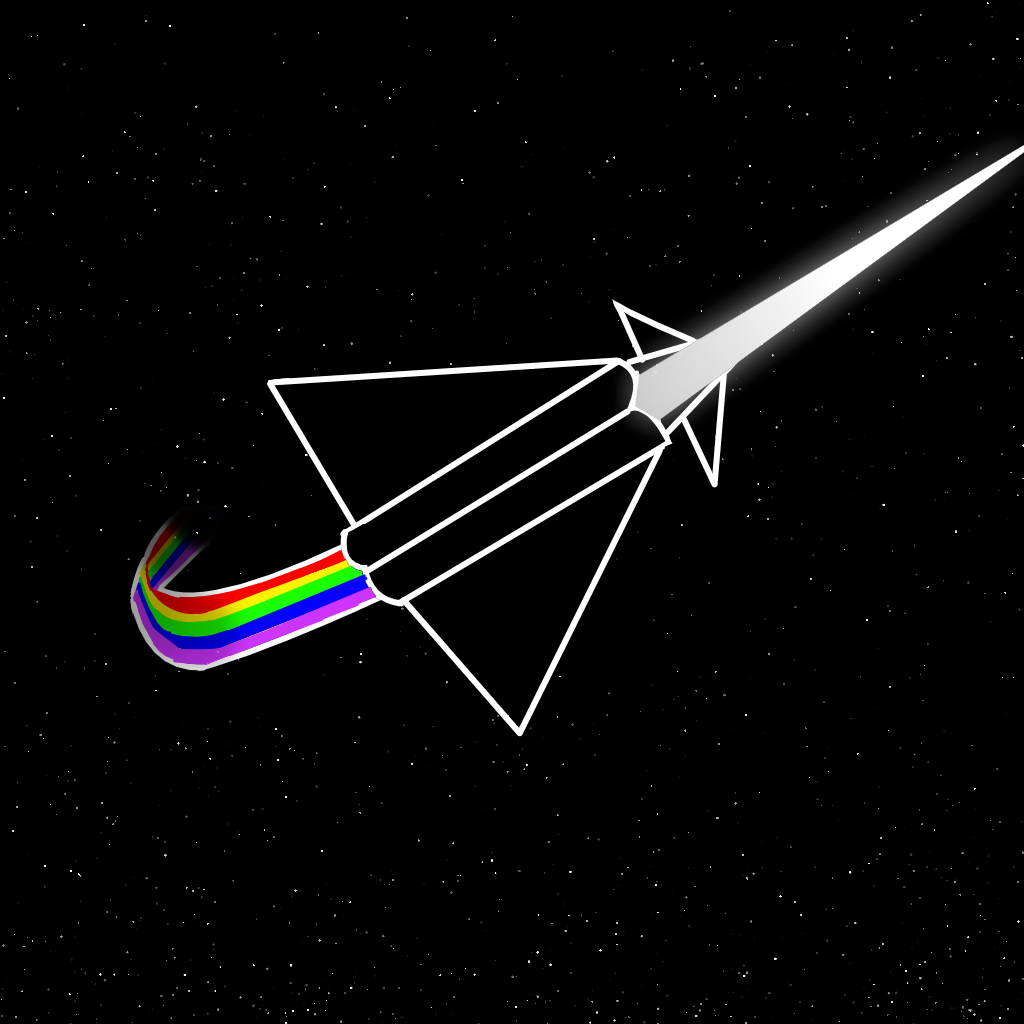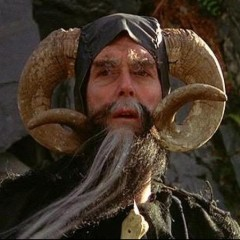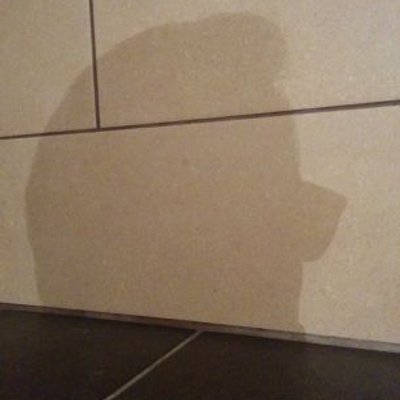But R and K agree on zero
Rankine isn’t pointing a gun at Kelvin because of this, but Kelvin is pointing one at Rankine because Rankine is an abomination that should not be
Imagine if some distance measuring system decided their zero was at like 10 feet.
Let me just shorten this down 8 feet
welds on an extra 2 feet
If using log scale, 0 is at -∞
no 0 would be at 1
I mean, the temperature can be -1. But nothing measures negative.
Pedantry:
K and °R agree on 0
K and °C agree on the unit difference
°F and °R agree on the unit difference
°R and °Ra are the exact same thing (??)Good thing °R and °RA aren’t pointing guns at each other
Neither are °F and °R nor °K and °C
This is almost artfully done
This screenshot is a little bit hard to see, but from what I can tell:
°RA is pointing at °R and °C
°C is pointing at K and °F
K is pointing at °R and at °F
°R is pointing at °F (and the other gun isn’t aimed at anyone in particular)
°F is pointing at K and at °CEmphasis disproves your claims, sadly. Perhaps there was another way to label them to make it fit, but that’s not what was done here.
Celsius and Fahrenheit agree on -40, but since they’re scales that scale at different rates there’s bound to be some value where they intersect rather than some meaningful number like Kelvin and Rankine being zeroed to Absolute Zero
Two lines which are not perpendicular will meet at one point?
Same with 574.59°F = 574.59K
°R and °Ra are the exact same thing (??)
I think °R is supposed to be Réaumur
Also Rankine, being an absolute scale, theoretically shouldn’t be in ° anything, and it’s only some weird historical quirk that is the reason it usually is called degrees.
I am not sure I follow that. The scale is always relative right? It’s just the zero that’s absolute. But that’s also the case with measuring angles where we do use the degree symbol.
It’s just the zero that’s absolute
Right, that’s what makes Rankine and Kelvin absolute scales, while Fahrenheit and Celsius are relative.
Celsius tried to fit too much into 100 notches to please big math.
F is more nuanced with more notches, but the ends aren’t logical. It coukd be shifted perhaps, but how?
If freezing was moved to 0, then water boiling would be 180
Perhaps C could have had a 200 degree range, then it would be closer to F and not so hard to convert.
But also: Scientists are important and we shouldn’t make it too easy, it demeans their work. Maybe make the C scale show water boiling at 183.4521 degrees so scientific calculations are more impressive-looking and respectable.
then it would be closer to F and not so hard to convert.
So few countries use Fahrenheit that this shouldn’t even be a consideration
The SI unit scales are chosen to fit together to avoid “respectable” scientific calculations.
To heat one milliliter (1 ml) of water one degree Celsius (1 °C) you need one calorie (1 cal) of energy.
Also the dimensions of one milliliter, is one cubic centimeter (1 cm^3), and that amount of water weighs 1 gram (1 g).
Thus 1 liter of water needs 1 kcal of energy to heat up 1 °C.
I’m aware, taught that in school.
Also aware of the real world, those things don’t mesh the same at altitude.
In theory, reality and theory are the same. In reality, they’re not.
I love science when it’s not treated like a religion.
and not so hard to convert
“Please change the entire world’s system to make it easier for the one country that uses a different one”
It wouldn’t even change the difficulty, really. You’d just wind up multiplying or dividing by 9/10 instead of 9/5.
America moving zero to Celcius’ zero would be better, it would remove one whole step from the calculation
Then if they made their degrees about 9 fifths the size (they could get higher resolution than they’d lose by doing what we do and quoting temperature to one decimal place where needed) it would be dead simple to convert (just change the symbol from °F to °C!)
It’s more like “please convert two nonsense systems to be more workable via math”. C is pretty unfriendly to universal math and depends on earth gravity, I’m not going to defend F on any standpoint.
The reality is we should all be using K.
K is just shifted °C though and just removes what’s nice about it with freezing/boiling of watee while requiring 3 digit numbers for every temperature you’d encounter in daily life. I think I’d rather use Fahrenheit
Celsius is literally just Kelvin but shifted… So it’s just as friendly for “universal math”.
It’s not limited to 100 steps. The decimal system gives you infinite granularity.
-40F 🤝 -40C
Even a broken clock is right twice day.
cries in digital clock
Even a stuck digital clock is right once a day.
When it’s stuck, yes. When it’s broken and the display is of welll…
It might not be right, but it’s never wrong.
Is that a thing that happens?
isn’t it strange how they match up at such an exact number
Funny how the imperial system matches at oddly exact numbers with the metric system… Strange indeed.
it’s likely because their current definitions are both fixed on the melting and boiling points of water

Sorry i was /s, the entire imperial system is now defined through the metric system standards. For example, 1in is defined as EXACTLY 2.54cm. Fahrenheit is defined as EXACTLY 5/9(x +459.67) [K] or 5/9(x-32) [C].
Fun fact!
At least Kelvin and Rankine agree on the zero, soooo…
Comparing arbitrary degrees to absolutes. Notice K is the only one without the degree symbol…
Would Rankine not be an absolute?
It is, but like everything imperial, it is cursed. So it still has a degree sign by convention despite being an absolute scale
yes it used the same zero as Kelvin
This is why Celsius is the only SI unit that isn’t just wholly better than its imperial counterpart. Both F and C are fairly arbitrary, but in my view F has the slight edge by giving numbers 0-100 in most weather conditions across earth.
Kelvin is the SI unit. Anyway also for the weather Celsius is clearer: Below 0 = snow, above 0 = rain. And Celsius at least has fixed points that can be recreated - if all thermometers and data on scales were lost we could easily recreate °C, but not °F.
Ah well I should have said metric measurement then. It is part of the metric system, yes?
If you can’t remember the number 32 then I guess. Personally I think it’s pretty bizarre to have negative temperatures all the time but whatever floats your boat.
Regarding losing all thermometers and data… if you lost the definition of Celsius there would be no way to recreate it. This seems maybe more likely then your scenario.
No seriously what is significant about 0F? I live in a place that sees a lot of negative F too.
It’s so arbitrary. If it was 0 at freezing water and 100 at human body temp I’d understand it but no, it’s literally nothing significant in people’s lives. It has no tangible anchor.
It’s purely emotion keeping it around.
Nothing. It’s equally arbitrary as setting 0 to be the freezing point of water.
But it covers the weather for the vast majority of people, the vast majority of time, better than Celsius does. That’s what I mean.
If you want to remove sentimentality from your temperature then use Kelvin but Celsius is just as arbitrary and sentimental as Fahrenheit is.
0 as the freezing point of water isn’t arbitrary though, and neither is boiling.
They’re both very useful reference points since water is universally available and you can easily tell when it freezes and boils, it makes it comparatively trivial and accessible to create your own thermometer which is likely to at least generally agree with someone else’s.
this is the one aspect where i kind of prefer imperial measurements for distance, basing measurements on the human body means everyone has easy access to a reference that is likely to be not too tremendously wrong.
Obviously not super relevant these days, but back in the day it was a pretty neat feature. Like fuck, it wasn’t that long ago that the meter and the kilogram were still defined by a SINGLE specific object kept in a climate controlled vault.
0°F is the coldest night Mister Fahrenheit has ever witnessed, thinking it couldn’t become any colder than this.
100°F is Mister Fahrenheit’s slightly feverish body temperature.
???
PS: Pretty much all other countries also had their own measurement systems and simply switched to metric because it made sense. I’m glad we did, and that pretty much all others did too.
PPS: I’d also be up for revamping time measurement, why can’t we have 10h a day, 100 minutes per hour, 100 seconds per minute? 100.000 seconds in total per day, currently we have 86.400 so a second would only become slightly shorter.
The French tried to implement that in the First Republic, together with 12 months à 30 days per year, 3 weeks à 10 days per month and 5 (6) extra days at the end of the year to make it work (from Christmas to New Year, how thematic!)
It failed because the French were fearing they’d have to work more (if they’d also only have 2 days off per 10d instead of per 7d). One of the biggest tragedies in French history. Without the week reform the time reform might’ve succeeded.
Changing the length of a second would be so insanely difficult that it’s probably isn’t worth attempting. Pretty mush every other standard unit has the second in there somewhere at some point, so changing that would mean spending decades of changing math on so many things. That story about the Mars probe that slammed into the planet because someone screwed up the units? That would be happening everywhere all the time.
In the end you’re always going to have weirdness with time because the orbit of the Earth around the sun isn’t going to be divided evenly by the rotation of the Earth. Whatever you do is going to come out janky, so why spend all the time and effort to change from our current jankiness to a different janky system? We’d have to put a lot of time and effort into solving the new problems caused by the new jankiness. Then someone else will probably propose some new janky system to replace that system, and it’s a never ending frustration because we’ll never have a perfect system because ultimately orbital mechanics don’t divide into even numbers.
Yep Celsius is 1-100 for water and Fahrenheit is 1-100 for humans
how is fahrenheit 1-100 for humans? 100 i can sorta see, most people have a body temp around ~37°C (though still, there’s about 1°C of variance…), but 0°F is very very cold and not exactly a temperature that many people encounter on a daily basis.
i certainly cannot think of anything more relevant to humans than the freezing and boiling points of water, most people encounter them often and it’s very easy to see when water starts freezing or boiling.
If you see ice outside you know the temp is below 0°C, when the water in your pot is boiling you know it’s at 100°C, it’s super fucking easy.But the reference points for fahrenheit cannot intuitively be measured, 0°F has no obvious indicator, and 100°F can at best be vaguely inferred based on the air temps we can do work in, and even then you can really only reliably infer something like 30°C because that’s generally when humans start feeling like it’s too warm to do significant amounts of labour.
I’ve always hated this justification of Fahrenheit. For it to be a good argument, 50 °F would need to be the ideal comfortable temperature. But instead 50 is really fucking cold. 100 just isn’t as hot as 0 is cold.
Fully agree with you. How does that make sense:
Really hot summer days (30°C) are 86°F
Usual summer days (25°C) are 77°F
Room temperature is ~70°F
Spring / autumn days (20°C) are 68°F
Chilly outside / late autumn / early spring days (~10°C) are 50°F
Cool outside / warm winter days (~0°C) are 32°F
Cold outside / usual winter days (-10°C) are ~15°F
Winter nights (bit below -20°C) are ~ -10°F
I mean, I deliberately avoided using terms like “hot summer days” and “usual winter day” because that’s far more dependent on where you are. Where I am it’s:
- Really hot summer days (35 ℃)
- Usual summer days (30 ℃)
- Room temperature (24 ℃)
- Spring / autumn days (25 ℃)
- Chilly outside (18 ℃)
- Cold outside / usual winter days (15 ℃)
- Winter nights (10 ℃)
So I used words that are about the experience of a person in those temperatures in comfortable light clothing, rather than times of year. And obviously there’s some subjectivity there, with some people being more comfortable in cold temperatures than others. But still, we’re talking about the comfortable mid point varying from mid 20s to high 10s. There’s no reasonable world in which 50 ℉ (10 ℃) is the midpoint.
Yes, it doesn’t matter which example you take, Fahrenheit never makes sense imo.
I think it depends on the person which is the problem, for me 50 isn’t that cold but 100 is completely unbearable
Yeah, 50 F is chilly.

See that Celsius graph is precisely the nonsense I’m trying to point out. 0 ℃ isn’t “fairly cold outside”. It’s literally the definition of freezing cold. 0 ℉ is “dead” if you’re not wearing quite heavy clothing. 0 ℃ is “really cold outside” and still understating things.
0 ℃ isn’t “fairly cold outside”. It’s literally the definition of freezing cold.
…for water. At 1 atmosphere of pressure. Not taking into account salinity.
0 ℉ is “dead” if you’re not wearing quite heavy clothing.
Lots of temperatures on both ends of the spectrum are “dead” without proper attire, regardless of what unit of measurement is used.
0 ℃ is “really cold outside” and still understating things.
I think there’s a bit of a reference frame issue here.
Zero C is normal winter temperature for a lot of people. For some, it’s downright balmy. If it’s sunny, I won’t need more than a fleece and jeans. Working outside, I’ll probably ditch the sleeves after a while.
Going off of your instance, I’m guessing you’re in Australia. Since I don’t know where, I grabbed a large southern city (Melbourne), and looked up the record holder for coldest temperature (Charlotte Pass). All temps in Celsius:
Melbourne:

Charlotte Pass:

For comparison, here’s a city near me (New York), and a random town I picked from a map in northern Minnesota (known for being cold in the winter).
New York:

Roseau:

That… is a stark difference. Where you live makes a huge impact on what feels “normal.” 0 C is no big deal here. It’s just “cold.” Minnesota in January? “What a nice day!” That’s not nonsense, it’s different perspectives.
Is Fahrenheit arbitrary and outdated? Yes. Is Celsius arbitrary? Also yes. There’s nothing special about the freezing and boiling points of water at 1atm. But that’s the (basis behind the) current scientific standard. Is it ridiculous that the US still uses Fahrenheit? Yes. Why? I don’t run the place, I just live here.
Does any of this matter in the day to day of normal people? No. Will people keep arguing about it? Absolutely.
PSI 0 100 ┣━━━━━━━━━━━━━━━━━━━━━━━━━━━━━━┫ Dead Potentially survivable Vs Atm 0 100 ┣━━━━━━━━━━━━━━━━━━━━━━━━━━━━━━┫ Dead Dead Vs kPa 0 100 ┣━━━━━━━━━━━━━━━━━━━━━━━━━━━━━━┫ Dead Totally Fine
Fahrenheit is 1-100 for humans
Only if you grow up with it lol. Fahrenheit makes no sense to me
This is more like if you measured altitude by counting from sea level vs the center of the earth vs the top of Mount Everest or something
Vs low tide vs high tide vs tidal average…
I think there are 4 different “tallest mountains on earth” depending on if you are measuring from sea level, how you are measuring sea level, or if you are measuring from the base and the mountain and how you are defining the base of the mountain.
Rankine and Kelvin have zero at the same point, which is absolute zero, and should not be used with the degree symbol
This concludes my TED talk
According to Wikipedia Rankine is properly used with the degree symbol, but sometimes is not by analogy with Kelvin.
Gross
I absolutely agree! Both should get degrees, because that would make temperatures finally make sense!
(I am aware that the degree symbol has something or other to do about not being absolute yada yada yada 😅)
0 lbs/lg = Absense of weight.
0 inches/centimeters = Absence of size.
0 Kelvin = Absence of heat.
If something is 0lbs, 0 inches and 0 Kelvin: does it even exist? 🤔
what the fuck is lg, using TVs as a unit of weight?
I mean, I think a neutrino is close to that.
But what if they mutate?!
Neutrinos are an elementary part of the universe, they can’t mutate.
You’re confusing them with Latinos.
It’s a joke from this dude
0lbs is absence of weight, 0kg is absence of mass. Terrestrials, smdh…
When avoirdupois pounds and pounds-force are used together I’m pretty sure it’s more common to use ‘lb’ for avoirdupois pounds and ‘lbf’ for pounds-force.
When having a beer, I’ve always found it funny that one of the few imperial measurements metric nations kept around, the pint, America went and invented their own. Uncharacteristically a smaller version too.
The US has their own version of all the imperial units. Also who uses pints except the Brits?
India, I think. But that’s the Brits’ fault too obviously.
We don’t use pint here. We have some traditional measures that have different absolute values depending on location. We are almost totally metric here.
I could’ve sworn I once had a pint but it was in a hotel lobby in Bangalore so not quite representative. I stand corrected, thanks.
So, here in good ol Austria, when we go to an US/UK/Irish pub and order a pint we always get 0,5L and for a 1/2 pint we get 0,33L.
Are half pints half the price of pints? I smell arbitrage.
Sadly, no.
America didn’t really invent their own volume of measurements, they just didn’t keep up.
They used what the British used, then separated from Britain, and didn’t update the units when Britain did.
Yes, I think the US pint is 16 Oz (2 cups), whereas the UK pint is 20 Oz (4 gills).
Metric nations havent kept the pint
I just started looking up the different ways to order beers. Wow. Even if it’s based on the metric system, each country really did go and reinvent the wheel.
They haven’t, but some still sell beer by pints. I can go to a store right now (well not right now, it’s past 10 PM) and buy a pint sized beer and a 0.5l beer from the same company.
Every time I hear, “pint” I think of Pippin saying, “they come in pints?!”
I went down a huge rabbit hole cause of this. I personally like °F over °C but agree it’s arbitrary. So I tried to make a scale that started at the coldest air temp on earth (some day in Antarctica) and went to the hottest day on earth (some day in death valley) and put the coldest day at 0°A and the hottest at 100°A.
Sadly this made a scale that was less precise than I’d like. I like that I can feel the difference between 73°F and 74°F and don’t want to have to use decimals.
So maybe the end points could be only places where people actually live. Well it looks like some people live in Russia around -70°C and some people live in northern Africa around 50°C so if you just take °C and add 60 you can get a -10 to 110 scale where most temps would fall between 0 and 100. Still has the unit difference of °C (which I don’t like) but I like that most temps are between 0 and 100. I also don’t really like negative temperature since it seems wonky.
To “fix” the unit scale you could just multiply everything by 2 so the difference between each full degree is half as much. So temps would be between -20 and 220. °A = 2(°C + 60) °A = 2(°C) + 120
And it turns out I (basically) created the Fahrenheit scale but moved. °F= 1.8(°C) + 32
TL;DR: I’m stupid and this was fun but also a waste of time lol
People live in -70c (-94f) weather? How the fuck do they do that?
Once you’re below -6C or so you just need more insulation. -6C to 10C in many ways can be harder to manage due to humidity, especially in wet conditions. My prolonged exposure experience is only down to -30C. I did not have enough insulation, but an extra base layer, better gloves/boots would have been sufficient. I was fine with fairly light clothing down to -18C. I hear -50C is where it starts to get really harsh again.
Your body also adjusts a lot. In the Summer in wearing a puffy indoors at 10C(50F) but in the winter I’ll go out in a t-shirt at -10C, especially if doing manual labor.
That’s crazy. My body doesn’t adjust to cold weather. I’m always cold when it’s cold outside, and I’m talking about cold which is considerably warmer than the cold you’re talking about.
Yeah like i said, -6 to about 10C is bad cold due to humidity. But after a few weeks of daily outside temps below zero i adjust. Colorado was even crazier when I was there. Needed thick socks and snowboots but otherwise the sun was still so warming I’d break a sweat walking with a jacket on.
Celsius is tied to points of ice melting and water vaporising. Since water is very important for the life on our planet, it makes even more sense that arbitrary chosen meters or seconds.
And similarly, Fahrenheit seems to be tied to the internal temperature of the human body, with 100 degrees being the maximum that the average person can handle before their organs start to be damaged.
But not everybody experiences temperature the same, so using a system based on what ‘humans’ like, seems a bit useless
Maximum is 100 °F and minimum is 95 °F. Those seem pretty arbitrary to me
Yes, Fahrenheit is about humans, and Celsius is about the element that makes life possible. The latter is more generic.
At sea level. Welcome to La Paz, where the triple point is made up and the freezing point doesn’t matter!
does you scale change as Earth warms?
Add a scale revision for each year to the meme
Meanwhile, Pi and the Fine Structure Constant watching the show, passing each other the popcorn.
The best part about the fine structure constant is that it is not related to any other thing. It just is.
It’s a magic number that just emerges in physics.
And it is not constant.
Even though it is.
Dimensionless numbers, not dependent on any mere mortal, subjective arbitrary unit of measurement like length (meters or yards or cubits - same difference) or time.
Whether you are on Earth or a planet in Andromeda or a billion light-years away, if you study subatomic structure you WILL bump into the fraction 1/137. Just like you will in geometry with 3.1416.
FRRACK


















